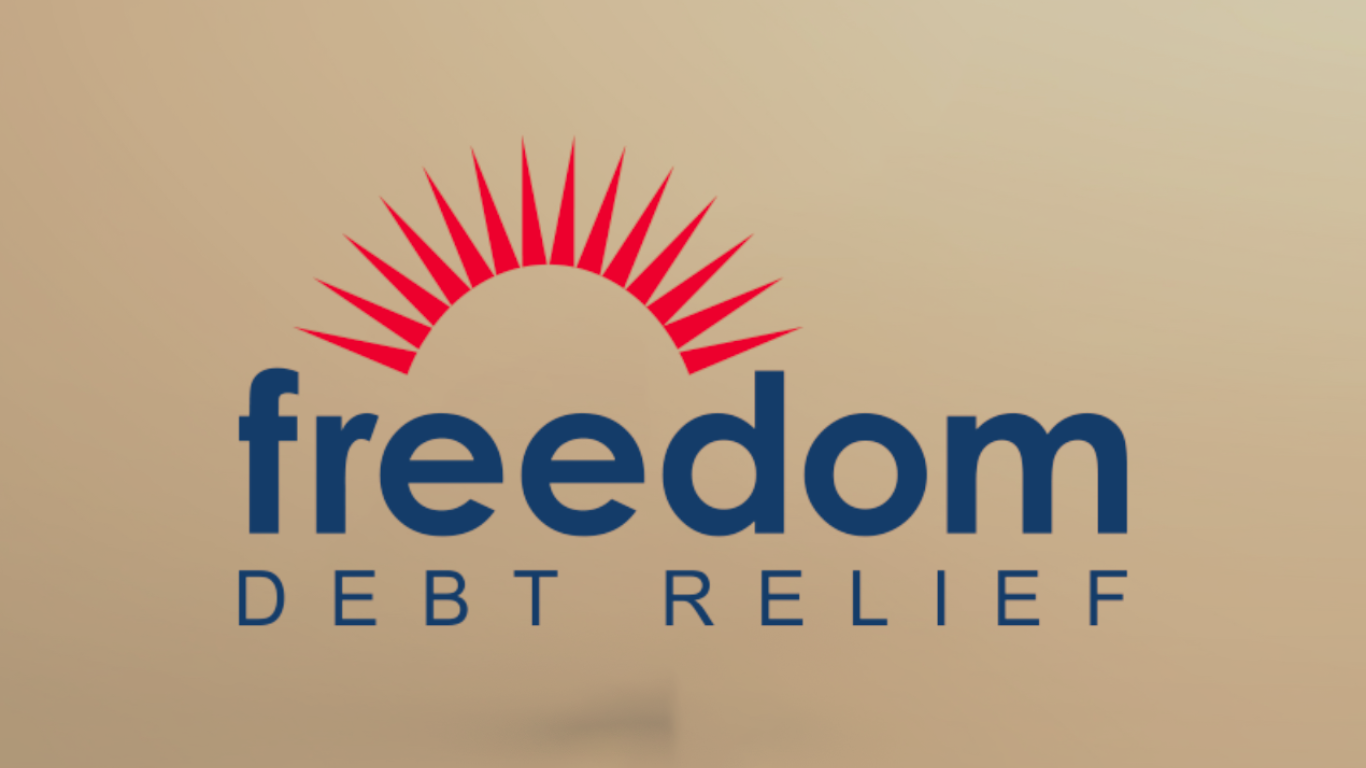If you’re struggling with debt, finding the right debt relief solution can feel overwhelming. Among the many options available, Freedom Debt Relief (FDR) has emerged as one of the most popular debt settlement companies. But what exactly does Freedom Debt Relief offer, and is it the right option for you?
In this comprehensive blog post, we’ll dive deep into Freedom Debt Relief reviews, breaking down everything from how the program works, customer experiences, fees, pros and cons, and much more. Whether you’re considering FDR or just looking to educate yourself about debt relief services, this guide is designed to give you the information you need to make an informed decision.
What is Freedom Debt Relief?
Freedom Debt Relief is a debt settlement company based in San Mateo, California, founded in 2002. Its primary mission is to help people overcome large amounts of unsecured debt (such as credit cards, personal loans, and medical bills) by negotiating settlements with creditors. Over the years, Freedom Debt Relief has settled over $10 billion in debt for its customers, helping many individuals regain control of their financial future.
However, debt settlement isn’t without its risks, and it’s important to fully understand how the process works before making a decision.
How Does Freedom Debt Relief Work?
Freedom Debt Relief operates using a debt settlement model. Here’s a step-by-step breakdown of how their process works:
- Initial Consultation: The process begins with a free consultation. This consultation typically involves discussing your financial situation, including how much debt you have and what types of debt you owe. The counselor will help determine if Freedom Debt Relief is the right fit for you.
- Customized Plan: If you decide to enroll in the program, FDR will create a customized debt settlement plan for you. This plan involves setting up a dedicated savings account where you’ll deposit funds each month instead of paying your creditors directly.
- Negotiations with Creditors: Once you’ve accumulated a significant balance in your savings account, Freedom Debt Relief will begin negotiating with your creditors to settle your debts for less than the amount owed. Typically, settlements range between 50% and 80% of the original debt amount.
- Settlement Offers: As settlements are reached, FDR will ask for your approval before finalizing the agreement. Once approved, they’ll use the funds in your savings account to pay off the creditor.
- Completion: The program usually takes 24-48 months, depending on how quickly you can build up your savings. Once all of your debts have been settled, you’ll be debt-free.
Is Freedom Debt Relief Legitimate?
Yes, Freedom Debt Relief is a legitimate company, accredited by the American Fair Credit Council (AFCC) and the International Association of Professional Debt Arbitrators (IAPDA). It’s also accredited by the Better Business Bureau (BBB) with an A+ rating.
However, just because a company is legitimate doesn’t mean it’s the right choice for everyone. Debt settlement is a serious financial decision with both potential benefits and risks.
What Are Freedom Debt Relief’s Fees?
One of the most common questions people ask is, “How much does Freedom Debt Relief cost?”
Freedom Debt Relief charges fees based on a percentage of the total debt enrolled in the program. The exact percentage depends on your state of residence and the amount of debt, but it typically ranges between 15% and 25% of the debt.
For example, if you enroll $20,000 of debt and Freedom Debt Relief negotiates a settlement for 50% of that amount, you’d owe the company $3,000 to $5,000 in fees.
Key point: Freedom Debt Relief only charges fees once they successfully settle your debt. If they can’t negotiate a settlement, you won’t owe them anything.
Pros and Cons of Freedom Debt Relief
Like any financial service, Freedom Debt Relief has its advantages and disadvantages. Below is a detailed breakdown to help you weigh the pros and cons of enrolling in their program.
Pros of Freedom Debt Relief:
- Potential for Significant Savings: Freedom Debt Relief often negotiates settlements for less than half of the original debt amount. For people drowning in debt, this can lead to substantial savings.
- Structured, Guided Process: FDR provides a structured plan for those feeling overwhelmed by their debt situation. The company handles all creditor negotiations, taking the stress off the client.
- Free Consultation: There’s no cost to start, so you can get an initial evaluation without committing to the program.
- No Upfront Fees: Freedom Debt Relief operates on a contingency fee basis, meaning you don’t pay them unless they succeed in negotiating a debt settlement.
- Track Record of Success: With over 20 years in the industry and billions in debt settled, FDR has a strong history of helping people reduce their debt.
Cons of Freedom Debt Relief:
- Credit Score Impact: Participating in a debt settlement program will negatively impact your credit score, as you’ll need to stop making payments to creditors. This can lower your score for several years.
- Fees Can Be High: While the fees are contingent on successful settlements, they can still add up, especially for those with significant debt. Expect to pay 15%-25% of your total enrolled debt.
- Not Guaranteed to Work: Freedom Debt Relief can’t guarantee that every creditor will agree to settle your debt. Some creditors may refuse, or negotiations may fall through.
- Potential Tax Consequences: The IRS considers forgiven debt as taxable income, meaning you may owe taxes on the amount of debt forgiven in the settlement.
- Debt Collection Harassment: During the negotiation period, creditors may still attempt to collect on your debt or even pursue legal action.
Customer Reviews of Freedom Debt Relief
One of the best ways to evaluate a company is to look at customer reviews. Below is a summary of common feedback from individuals who have used Freedom Debt Relief’s services:
Positive Reviews:
Many customers express satisfaction with how much money they were able to save through FDR’s negotiations. These reviewers often highlight:
- Savings: Customers mention settling debts for 50% or less of what they owed.
- Professionalism: Positive reviews frequently mention how helpful and knowledgeable the customer service representatives were throughout the process.
- Communication: Several reviews highlight the company’s clear communication, making clients feel involved and informed at every step.
Here’s an example of a typical positive review:
“I was drowning in debt with no end in sight. Freedom Debt Relief helped me reduce my debt by 65%! The process took time, but their representatives were always transparent and made sure I understood everything.”
Negative Reviews:
On the flip side, there are also negative reviews from customers who were unhappy with their experience. Common complaints include:
- Credit Score Damage: Some customers were disappointed by how much their credit score dropped during the process, even though FDR is upfront about this risk.
- Program Duration: The process can take several years, which frustrated some clients who were hoping for quicker results.
- Aggressive Collections: A few reviews mention that creditors continued to harass them with phone calls and legal threats during the negotiation period.
Here’s an example of a negative review:
“I signed up with Freedom Debt Relief thinking it would help, but my credit score dropped like a rock. I also had to deal with collections calls for months before anything was settled.”
Alternatives to Freedom Debt Relief
Freedom Debt Relief isn’t the only debt relief option available. Below are some alternative methods for dealing with debt, which may be more suitable depending on your situation:
- Debt Management Plan (DMP): Offered by credit counseling agencies, a DMP helps you consolidate your debt into one monthly payment with reduced interest rates. However, unlike debt settlement, DMPs require full repayment of the principal debt.
- Debt Consolidation Loan: A debt consolidation loan allows you to combine multiple debts into a single loan with a lower interest rate. This can make payments more manageable, but you’ll still owe the full amount of debt.
- Bankruptcy: For those in extreme financial distress, bankruptcy may be a viable option. However, this has long-term consequences for your credit and should only be considered after exploring all other options.
- Do-It-Yourself Debt Settlement: Some people choose to negotiate with creditors directly. This can be time-consuming and difficult, but it may allow you to avoid fees from debt settlement companies.
Is Freedom Debt Relief Right for You?
Deciding whether to use Freedom Debt Relief comes down to your financial situation and goals. If you have a significant amount of unsecured debt and are struggling to make minimum payments, FDR may be a viable solution to help you reduce what you owe and get back on your feet.
However, if you’re concerned about your credit score or don’t want to deal with the risks involved, you may want to consider alternatives like debt management or consolidation.
Ultimately, debt settlement isn’t a one-size-fits-all solution, and it’s important to consult with a financial advisor or credit counselor before making any final decisions.
Frequently Asked Questions (FAQs)
1. Will Freedom Debt Relief affect my credit score?
Yes, enrolling in Freedom Debt Relief will negatively impact your credit score. Since you stop making payments to your creditors during the settlement process, this will be reported to credit bureaus. However, if you’re already behind on payments, your score may have already been affected.
2. How long does the Freedom Debt Relief program take?
The typical Freedom Debt Relief program lasts between 24 and 48 months, though it can vary depending on the amount of debt enrolled and how quickly you can save funds for settlements.
3. Can I leave the Freedom Debt Relief program early?
Yes, you can leave the program at any time. However, you may face consequences such as resumed collection efforts from creditors.
4. What types of debt does Freedom Debt Relief cover?
Freedom Debt Relief primarily works with unsecured debts, including credit cards, personal loans, medical bills, and certain business debts. It does not work with secured debts like mortgages or auto loans.
5. Are there any tax implications for settled debt?
Yes, the IRS may consider forgiven debt as taxable income. However, you may be able to exclude this from your taxable income if you can prove insolvency.
Conclusion
Freedom Debt Relief offers a legitimate and potentially effective solution for individuals struggling with large amounts of unsecured debt. However, it’s important to fully understand the potential drawbacks, such as credit score damage, fees, and potential tax consequences.
Before enrolling, consider whether the benefits outweigh the risks and explore alternatives like debt consolidation or credit counseling. For many, FDR has provided a path out of debt, but it’s not the right solution for everyone. Make sure to consult with a financial professional to ensure you’re making the best decision for your unique situation.
By understanding how Freedom Debt Relief works, reviewing customer experiences, and considering alternative debt solutions, you’ll be well-equipped to make an informed choice about whether this service can help you regain financial freedom.




